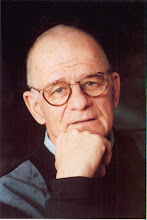Starbucks: How to Squeeze the Value Out of a Treasured Brand Without Killing It
Starbucks has had its ups and downs over the last couple of years. And now the market seems to be making a rough judgment on the company every day.
That’s the problem with taking a wonderful idea and building it to the point that you can launch an IPO and cash in on the goodwill you created.
But once you bite that IPO apple and allow your company to be publicly traded there are few secrets to be kept as you try to manage the brand over the shoals and storms of the world’s economies.
Starbucks saw amazing growth in the late ‘80s and ‘90s as CEO Howard Schultz built out his retail footprint to 16,000 stores in 50 countries and his revenues to over $10 billion.
It was one of those few iconic super-brands, because Schultz was able to create a category where none existed: The idea that we would pay around $4 for a fresh cup of coffee and steamed milk, and, in many cases, enjoy the special respite Schultz was able to provide customers in comfortable chairs drew customers from Palo Alto, California, to the shadow of the Forbidden City of China.
Then things got sort of wacko. Though Starbucks still called its servers baristas and delivered on taste, the new management ripped out the huge, evocative copper coffee grinders, tightened store space with all kinds of extras—like selling music and coffee accessories-- and gradually kept hiking the cost of its product. Starbucks was served on United Air Lines planes and stores started appearing in airport concourses. Then it was packaged to sit on grocery shelves and you began to wonder what happened to freshness.
Suddenly, when the economy started to tank two years ago, the board fired president/CEO Jim Donald and brought back Schultz who said, he was returning to restore the ”distinctive Starbucks experience.”
Now, even though profit has increased nicely this year to a forecast $150 million for the 4th quarter, and the stock is up from $11 last November to the present range of $19 to $20, Schultz seemed to have abandoned his commitment to building brand value, as he introduces first an instant variety of his coffee, called Via, and then has begun exploring the horizon for a fast-food partner like McDonalds or Subway.
Schultz defends his decision to enter the $17 billion instant coffee category, saying it was ripe for innovation and Via will set new taste standards. But, according to Business Week, the blog meisters are saying the baristas are finding the pressure to sell Via “intense and unwelcome.”
The current climate is challenging. Quarterly sales have dropped 4 percent to $2.4 billion. Same-store sales have dropped for seven consecutive quarters, but this quarter it will be down only 1% which is an improvement on the 5% in last quarter and a 7% decline a year ago.
Starbucks has been smart about using its cash to buy up other franchises, such as Seattle’s Best Coffee (which is making a deal with Subway and is already in many Border’s book stores in the U.S.). It is exploring entering the energy drink market. And it’s overhauling its daytime menu to include salads and baked goods without high-fructose corn syrup or artificial ingredients.
These are all good moves. If Starbucks is going to offer food why wouldn’t it be healthy, tasty and inviting. (Unfortunately it’s airport sandwich line tastes like cardboard.)
But though such a global brand is durable and elastic to a point, it still needs to be defended—most importantly by Schultz who, because of his special place at the company, can decree things with virtually no pushback from his management team.
If Starbucks was a widget, say an MP3 player or a line of sunglasses, then maybe it wouldn’t matter whether you were pushing your product in a Wal-Mart or a Nordstrom’s. But Starbucks is stuck: It’s both a product and an experience, and it needs a certain kind of retail environment to deliver on that brand promise. It is also facing competition now from Dunkin’ Donuts and McDonalds which have their own line of special coffees – at half the price of a comparable Starbucks cup.
Faced with consumer resistance to splurge for a high-priced coffee break, Starbucks more than ever must defend its premier position, while always exploring ways to innovate and expand, similar to the way Apple has been able to build out its line of computers at a premium price.
“I came back…. because I had an intuitive sense of the equity of the brand and the experience of customers,” says Schultz. But he may still need to hire a brand policeman to keep his tinkering from threatening the core brand.


1 Comments:
This comment has been removed by a blog administrator.
Post a Comment
<< Home